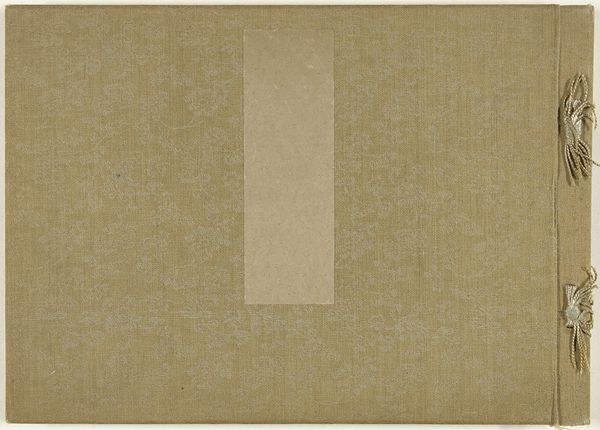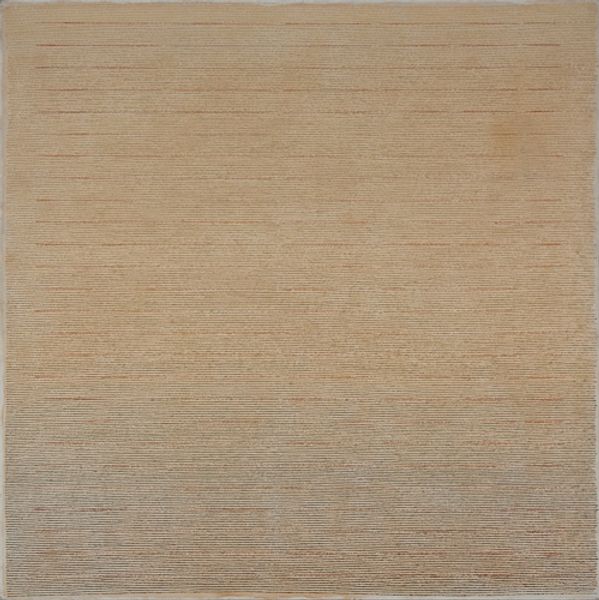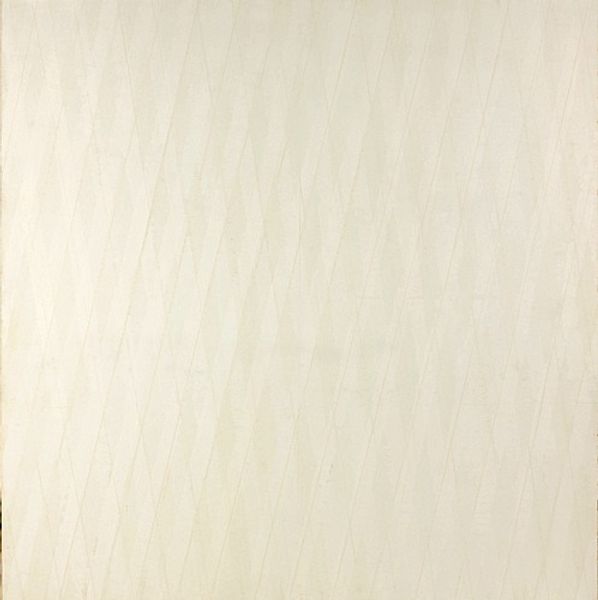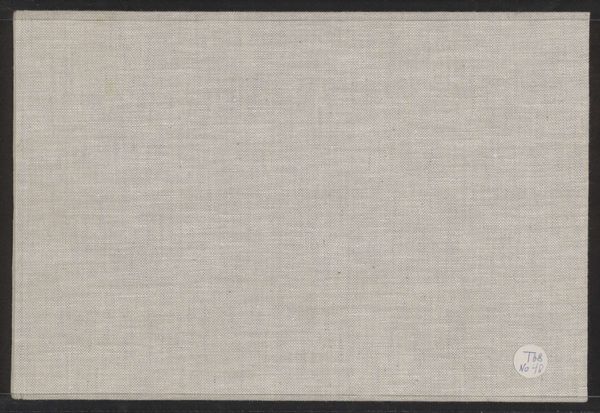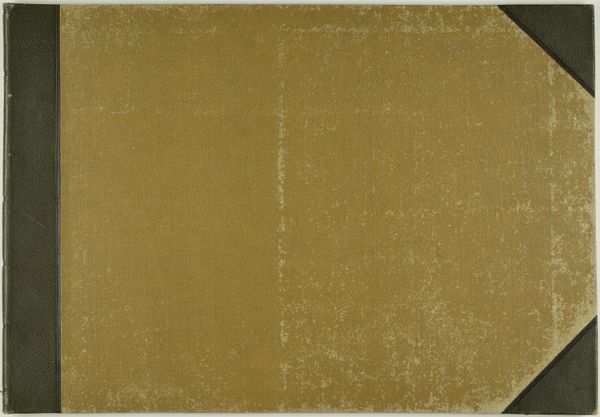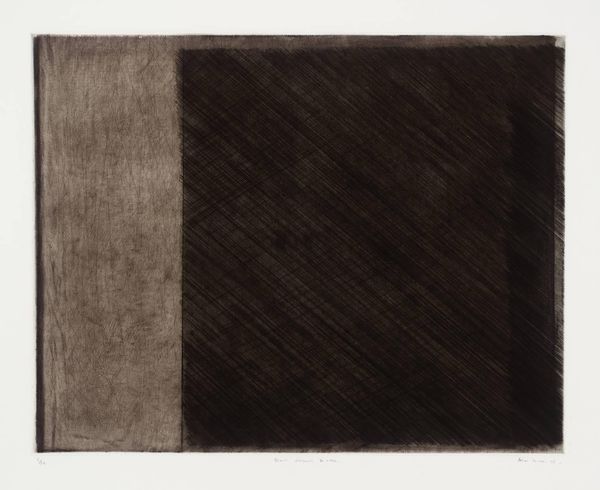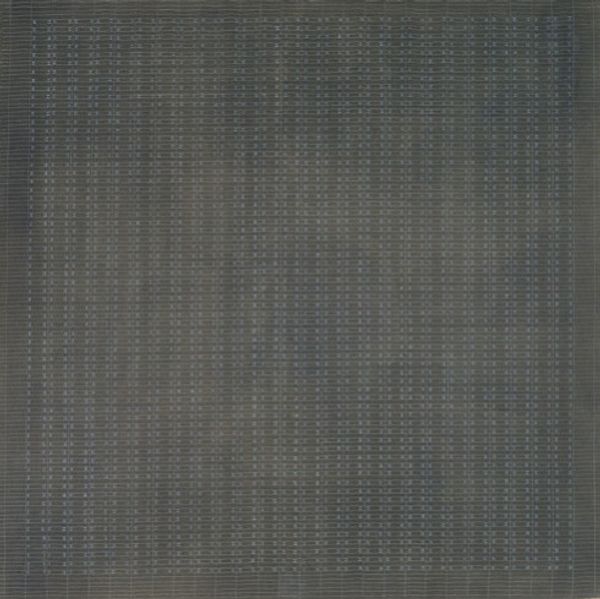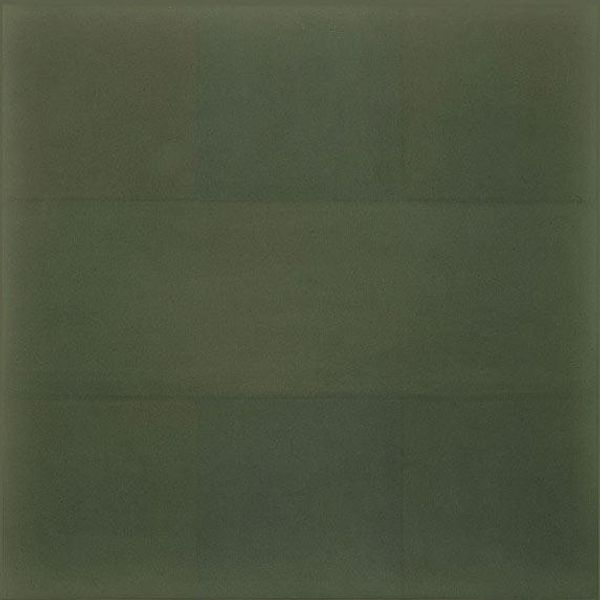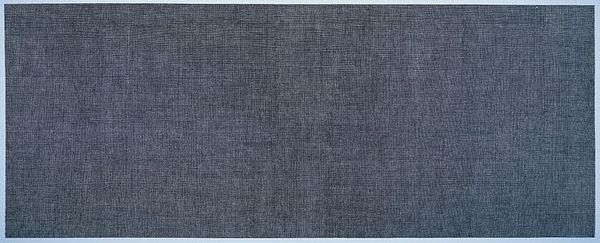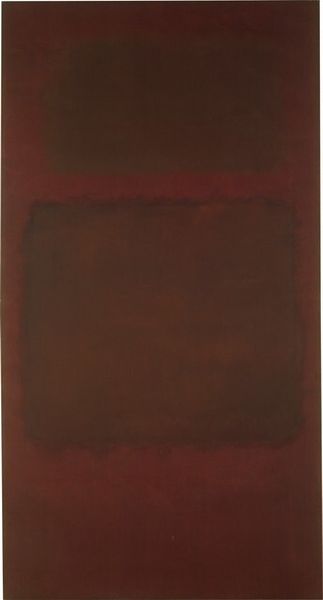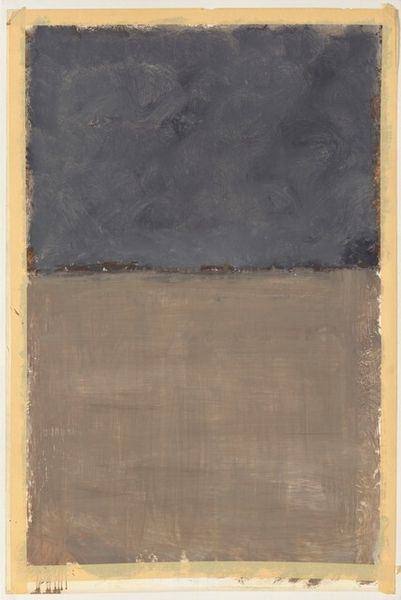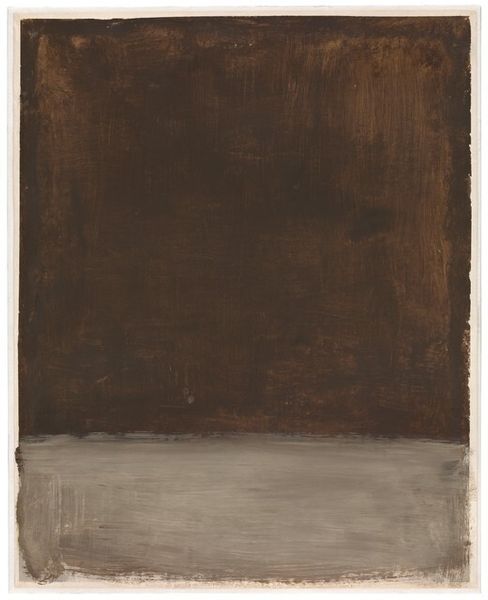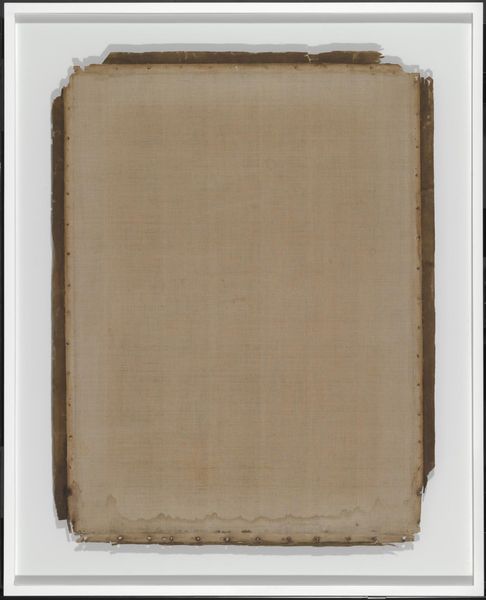
Copyright: Yun Hyong–keun,Fair Use
Curator: Yun Hyong-keun's *Umber Blue*, completed in 1978, presents us with a profoundly meditative encounter. What strikes you first about this piece? Editor: Well, it’s certainly somber. Those blurred edges create a hazy effect, as though the shapes are emerging from—or dissolving into—the canvas itself. It's minimalist, bordering on melancholic. Curator: Yun was a master of subtlety, working with thinned oil paint on absorbent canvas to achieve precisely that effect. He exploited the material to coax the paint to almost stain, to merge with the canvas, rather than sit upon it. Editor: I’m interested in that absorbent canvas. You know, the choice of materials dictates so much. Was the canvas prepared traditionally? How much does its weave influence the paint's behavior? The dark pigments almost pool at the edges... Curator: Exactly! That bleeding, almost like uncontrolled seeping, became central to his signature style. This wasn’t an accident, it was actively welcomed into his practice. His method mirrors a kind of deliberate 'un-making,’ challenging ideas around the supposed skill in traditional painting. Editor: It's as if the work creates itself—the artist just sets the conditions. The contrast of textures is fascinating; that porous centre alongside the dense dark umber either side. One asks the other what it’s made of. Curator: The way these vertical shapes seem to hover and breathe has an almost spiritual effect on me. There's a quality that suggests something ancient, as though they are pillars or doorways that offer passage to contemplation. I suspect his connection with nature fed that sensibility too. Editor: Certainly, one could say the material presence here embodies the land and labour it came from: where was the pigment sourced and refined? Who wove the linen? Curator: He saw himself working alongside nature rather than above it, you see. This humility shines through, making something simple reverberate profoundly, if you ask me. Editor: Absolutely. To approach a piece like *Umber Blue* materially is to challenge the romantic idea of artistic genius and center labor. Curator: Precisely. Thanks, these material and historical reminders are valuable and important to notice! It brings us down from lofty poetics in very healthy ways. Editor: Always.
Comments
No comments
Be the first to comment and join the conversation on the ultimate creative platform.
